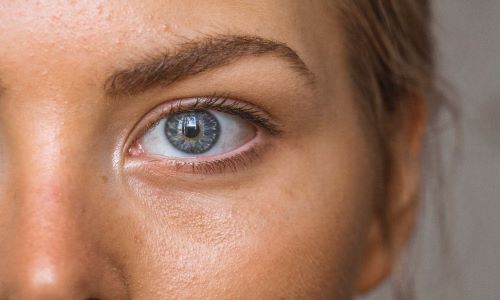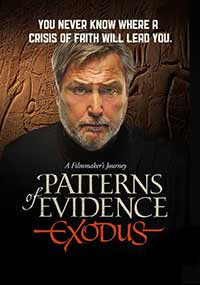Navigating Thyroid Eye Disease Treatments and Related Health Considerations
 By
By
Thyroid Eye Disease (TED), also known as Graves'
ophthalmopathy, is a condition that affects the eyes due to an overactive
thyroid.
As the thyroid gland produces excessive hormones,
it triggers an immune response that affects the tissues surrounding the eyes.
Managing this complex condition requires a multifaceted approach, considering
both eye-related symptoms and the underlying thyroid dysfunction.
In this article, we will explore the various
treatments available for Thyroid Eye Disease. We will also discuss the crucial
health considerations that patients and healthcare providers must navigate for
optimal management.
Thyroid Eye Disease is a multifaceted condition
intricately linked to an overactive thyroid, commonly associated with Graves'
disease. It emerges when the immune system mistakenly targets the tissues
around the eyes. According to Penn Medicine, this leads to symptoms such as
bulging eyes, double vision, and discomfort. Early recognition of these signs
is critical for timely intervention.
Additionally, gaining insights into the disease's
origins enhances our ability to develop tailored treatment plans, addressing
both the thyroid dysfunction and ocular manifestations. By understanding the
intricate interplay between the thyroid and the eyes, healthcare providers can
adopt a more nuanced and effective approach to managing TED.
Amidst the array of treatments for TED, Tepezza
(teprotumumab-trbw) stands out as an FDA-approved game-changer. Specifically
designed to address the underlying cause of the problem, Tepezza has garnered
attention for its efficacy in reducing symptoms. The treatment involves a series
of intravenous infusions administered every three weeks, totaling up to eight
sessions.
Unfortunately, amidst the optimism surrounding
Tepezza, legal complexities have arisen. Numerous individuals across the nation
have filed lawsuits against Tepezza manufacturer, Horizon Therapeutics. The Tepezza lawsuit claims that the drug resulted in hearing impairment,
including permanent hearing loss.
According to AboutLawsuits, the legal journey
commenced in August 2022 when the first plaintiff filed a lawsuit in Illinois.
The lawsuit alleged that the drug caused permanent hearing loss. TorHoerman Law
notes that the Tepezza litigation serves as a reminder of the delicate balance
between medical advancements and patient safety.
Conventional treatments for TED involve a
spectrum of interventions, from medications regulating thyroid function to
steroids managing inflammation. Antithyroid medications and beta-blockers
effectively control symptoms associated with thyroid dysfunction, while
steroids target inflammation in the eye tissues.
However, the prolonged use of steroids raises
concerns about potential side effects, emphasizing the need for a personalized
and balanced treatment approach. Striking the right balance between symptom
control and minimizing adverse effects is key to optimizing the efficacy of
conventional treatments.
When TED progresses to a severe stage,
characterized by significant eye pressure, orbital decompression surgery
becomes a viable option. This surgical intervention involves strategically
removing or repositioning bone around the eye socket to alleviate pressure and
create more space.
According to a report published by the NIH, TED
patients undergo surgical decompression to avoid additional
corneal injury. It also helps with tearing and grittiness, optic nerve
compression, and cosmetic issues.
The surgical options range from orbital fat
decompression to bony decompression, providing healthcare providers with a
toolkit for addressing the diverse needs of patients. Understanding the
intricacies of these surgical approaches empowers both patients and healthcare
professionals to make informed decisions tailored to individual circumstances.
Beyond conventional treatments, radiotherapy and
immunomodulatory therapies offer alternative avenues for managing TED.
Radiotherapy works by modulating the immune response and reducing inflammation,
providing a complementary approach to conventional strategies.
Diving into the mechanisms of action of these
therapies reveals their potential benefits and risks, paving the way for a more
diversified treatment landscape. Understanding the role of radiotherapy and
immunomodulatory therapies in the treatment arsenal allows healthcare providers
to tailor interventions to the needs of patients.
Complementary therapies such as eye exercises and
dietary modifications are gaining recognition for their potential to enhance
the overall well-being of TED patients. Eye exercises, including gentle
movements and visual focusing exercises, contribute to maintaining eye health.
Dietary modifications, such as incorporating
anti-inflammatory foods, may offer additional support. While not standalone treatments,
these integrative approaches enrich the treatment landscape, providing patients
with tools to actively participate in their care and well-being.
The visible changes associated with TED can
profoundly impact mental health, influencing self-esteem and overall
well-being. Beyond the physical manifestations, the emotional toll of living
with a visible condition should not be underestimated.
Recognizing these psychological aspects becomes
integral to a holistic approach to patient care. Integrating mental health
support into the treatment plan, such as counseling or support groups,
acknowledges the interconnected nature of physical and mental well-being.
The journey of managing TED extends beyond
initial interventions, emphasizing the importance of long-term monitoring and
regular follow-ups. Healthcare providers play a pivotal role in assessing
treatment effectiveness, adjusting interventions as needed, and addressing any
emerging complications.
Active patient engagement, open communication,
and a collaborative approach between patients and healthcare teams form the
foundation for successful long-term TED management. Regular check-ups provide
opportunities to evaluate the evolving needs of the patient and ensure a
comprehensive strategy for navigating the complexities.
In conclusion, managing Thyroid Eye Disease
requires a balanced, patient-centered approach. While Tepezza offers promise,
concerns highlight the delicate balance between innovation and safety.
Conventional, surgical, and complementary
treatments provide diverse options, with mental health considerations being
crucial. Long-term success hinges on collaborative, adaptive care,
acknowledging the complexity of TED.
Ultimately, ongoing assessment and individualized
strategies are essential for navigating the challenges posed by this
multifaceted condition.Understanding Thyroid Eye Disease
Tepezza: A Breakthrough With
Complications
Conventional Treatments:
Medications and Steroids
Orbital Decompression Surgery
Radiotherapy and Immunomodulatory
Therapies
Complementary Therapies
Mental Health Considerations
Long-Term Monitoring and
Follow-Up






